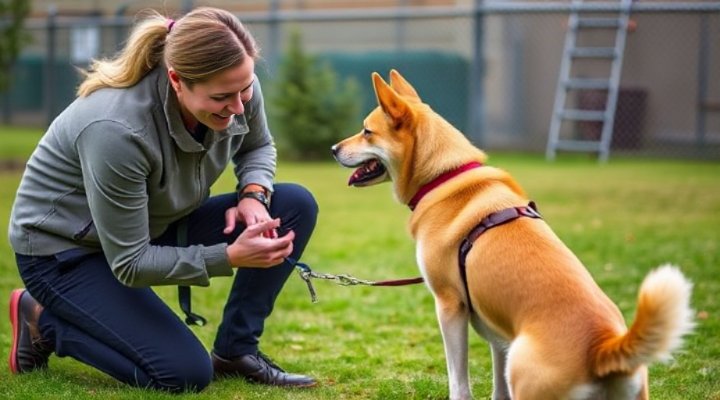Training a dog with behavioral issues can be a daunting task, but with the right approach, it’s entirely possible to turn things around. Whether your dog is exhibiting aggression, anxiety, or other problematic behaviors, understanding the root cause is the first step toward a solution.

Behavioral issues in dogs often stem from fear, lack of socialization, or past trauma. For example, a dog that barks excessively at strangers might have had a negative experience in the past. Similarly, a dog that chews furniture when left alone could be suffering from separation anxiety. Identifying these triggers is crucial for effective training.

Understanding Common Behavioral Issues in Dogs
Before diving into training techniques, it’s essential to recognize the most common behavioral problems dogs face. These include aggression, excessive barking, chewing, digging, and separation anxiety. Each issue requires a tailored approach, but the underlying principle remains the same: patience and consistency.
Aggression, for instance, can manifest as growling, snapping, or even biting. This behavior might be directed toward other dogs, strangers, or even family members. On the other hand, separation anxiety often leads to destructive behaviors when the dog is left alone. Understanding these behaviors helps in addressing them effectively.

Effective Techniques for Training a Dog with Behavioral Issues
Positive reinforcement is one of the most effective methods for training dogs with behavioral issues. This technique involves rewarding good behavior with treats, praise, or playtime, thereby encouraging the dog to repeat those actions. For example, if your dog tends to bark at the doorbell, rewarding them for staying quiet can help curb this habit.
Another useful technique is desensitization, which involves gradually exposing the dog to the source of their fear or anxiety in a controlled manner. For instance, if your dog is afraid of loud noises, playing recordings of those sounds at a low volume and gradually increasing it can help them become more comfortable.

When to Seek Professional Help
While many behavioral issues can be addressed at home, some situations require professional intervention. If your dog’s behavior is severe or poses a risk to others, consulting a dog behaviorist is highly recommended. These experts can provide personalized training plans and support to ensure your dog’s well-being.
Additionally, certain behaviors might be linked to underlying health issues. For example, a sudden change in behavior could indicate pain or discomfort. In such cases, a visit to the vet is essential to rule out any medical causes.

Creating a Supportive Environment for Your Dog
A supportive environment plays a significant role in addressing behavioral issues. Ensuring your dog has plenty of physical and mental stimulation can prevent many problems from arising. Regular exercise, interactive toys, and socialization opportunities are all key components of a happy and well-adjusted dog.
Moreover, maintaining a consistent routine helps dogs feel secure and reduces anxiety. Feeding, walking, and training sessions should occur at the same times each day to provide structure and predictability.
Final Thoughts
Training a dog with behavioral issues is a journey that requires time, effort, and a lot of love. By understanding the root causes of these behaviors and employing effective techniques, you can help your dog overcome their challenges. Remember, every dog is unique, so what works for one might not work for another. Stay patient, stay consistent, and celebrate the small victories along the way.
For more information on dog training and behavior, check out resources from the American Veterinary Medical Association or the ASPCA.
Related Keywords: dog training, behavioral issues in dogs, dog behavior correction, positive reinforcement dog training, dog training techniques
